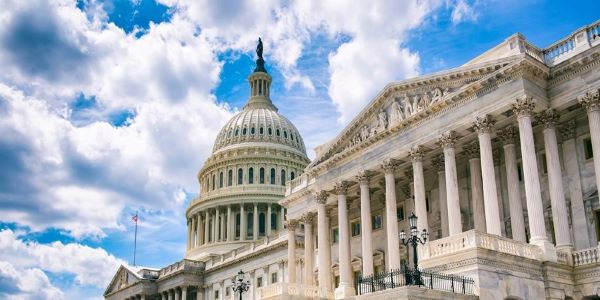On May 21, 2018, SmileDirectClub filed a lawsuit against the Georgia Board of Dentistry (the “Board”) in federal court. See SmileDirectClub, LLC v. Georgia Board of Dentistry et al., Case No. 1:18-cv-02328. The lawsuit arises out of a rule (Georgia Rule 150-9-.02(3)(aa)), which requires “digital scans for fabrication [of] orthodontic appliances” to be performed by an expanded duty dental assistant acting under the direct supervision of a licensed dentist.
On February 21, 2019, the American Association of Orthodontists (AAO) filed court papers supporting the position of the Board and its individual members in the lawsuit and in opposition to the claims and arguments made by SmileDirectClub.
On May 8, 2019, the Court entered an Order dismissing a majority of SmileDirectClub’s claims in the lawsuit. The Court dismissed all of the claims against the Board as an entity, as well as any claims against the Board’s individual members seeking monetary damages. The only claims not dismissed by the Court were those claims against the individual members seeking non-monetary relief. View the full order here.
In addition, the Court rejected SmileDirectClub’s claim seeking a declaratory judgment that its digital scanning of patients’ teeth does not constitute the “practice of dentistry or dental hygiene.” The Court called this argument “incorrect” (p. 5), stating,
Here, SmileDirectClub’s acts of taking digital scans of a patient’s mouth for the purpose of having a dentist or orthodontist approve of a treatment plan for correcting a malposition of the patient’s teeth falls squarely within the definition of the practice of dentistry as set forth in O.C.G.A. § 43-11-1(6) and O.C.G.A. § 43-11-17(a)(2) and (a)(5). Accordingly, SmileDirect has failed to state a plausible claim for declaratory relief, and the Defendant’s Motion to Dismiss [Doc. 29] is GRANTED as to Count I of the Complaint.
(Order, p. 6) (Emphasis added). This ruling by the Court stands in contrast to the position frequently taken by SmileDirectClub that it does not engage in the practice of dentistry and therefore its practices cannot be regulated by state dental boards. See, e.g., SDC’s Complaint in this Georgia lawsuit, ¶ 87 (“Accordingly, SDC seeks declarations from this Court … that (1) the provision of digital scan services by SDC pursuant to the protocol described above does not constitute the practice of dentistry or dental hygiene …”); and SDC’s Amended Complaint, ¶ 105, in SmileDirectClub et al. v. Ala. Bd. of Dentistry et al., Case No. 2:18-cv-01679, N.D. Ala. (“In sum, the taking of photographs which are stored or processed digitally through the use of an iTero or other similar device does not constitute the practice of dentistry or dental hygiene and is not in need of oversight or regulation….”).
As an advocate for patient health and safety, the AAO will continue to monitor legal cases and issues arising from direct-to-consumer orthodontics.
About the American Association of Orthodontists
Founded in 1900, the AAO is the world’s oldest and largest dental specialty organization. It represents more than 19,000 orthodontist members throughout the United States, Canada and abroad. AAO member orthodontists have successfully completed an accredited orthodontic residency program, after previously graduating from dental school. As a professional organization, the AAO is dedicated to, among other goals: (a) ethically advancing the art and science of orthodontics and dentofacial orthopedics worldwide; (b) improving the health of the public by promoting quality orthodontic care, the importance of overall oral healthcare, and advocating for the public interest; and (c) educating the public about the benefits of orthodontic treatment and the educational qualifications of orthodontic specialists.
For more information visit aaoinfo.org, which includes the AAO’s “Questions to Consider When Researching Direct-To-Consumer Orthodontic Companies.” Comprehensive orthodontic treatment is a complex medical process, and the AAO has long held the position that it is in the best, and safest, interest of the public to have that treatment conducted under the direct and ongoing supervision of a licensed orthodontist.



